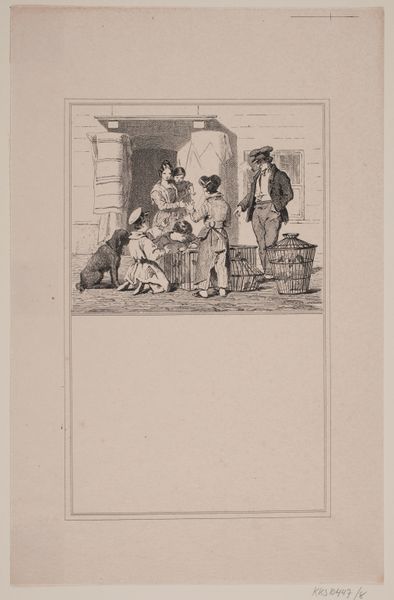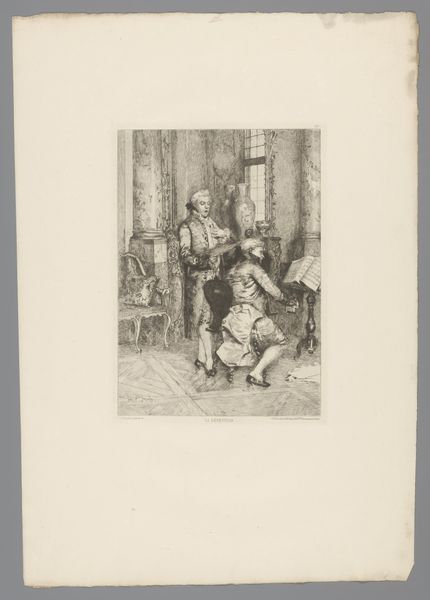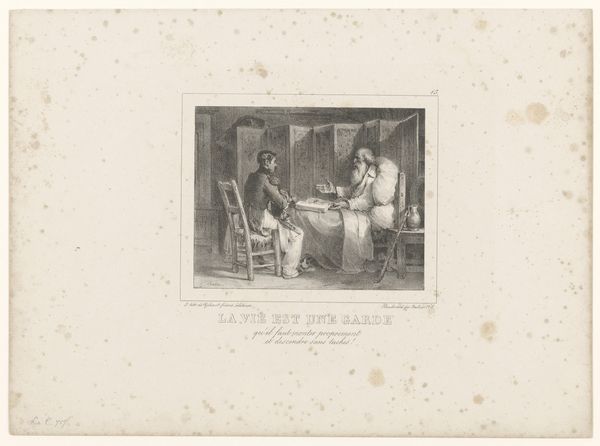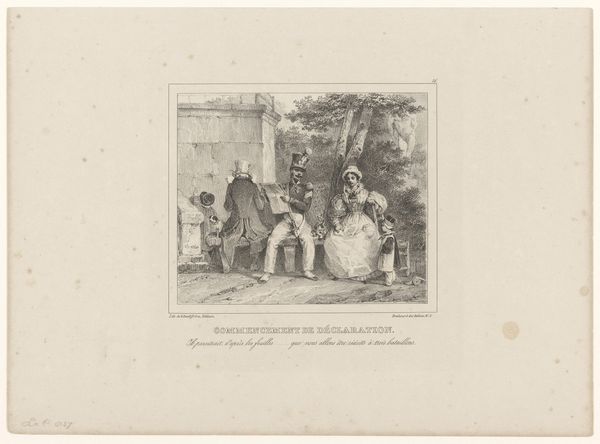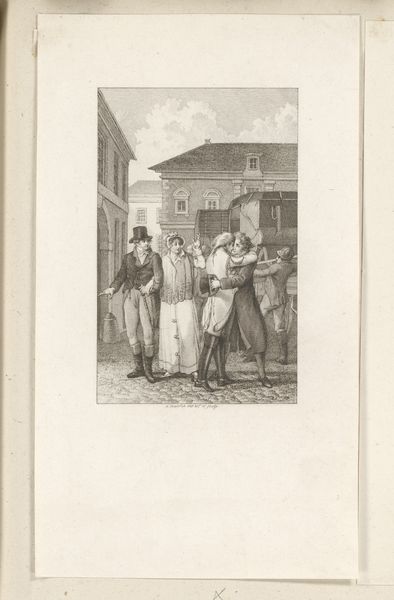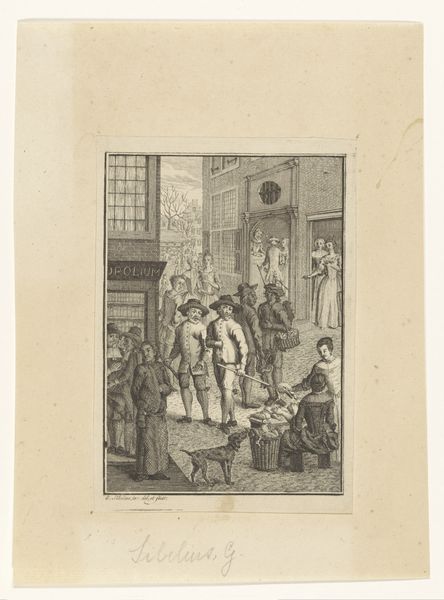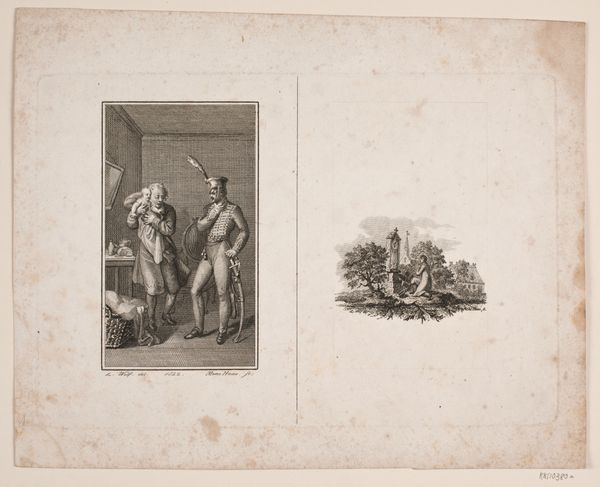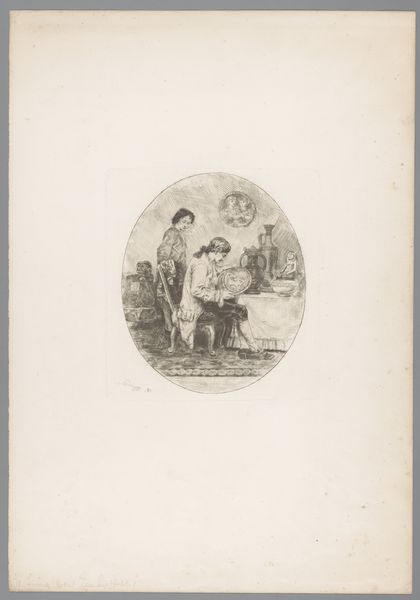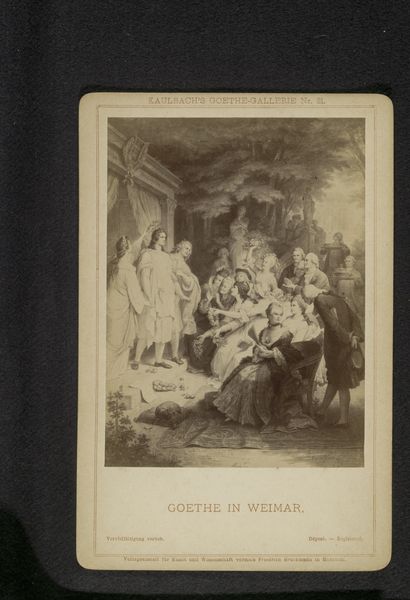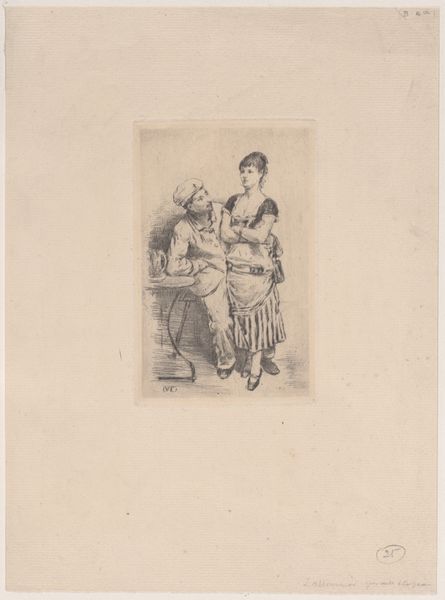
Fugle i fangenskab. Nr. 9 i Chr. Winther og M. Rørbye, "25 Billeder for små børn" 1846
0:00
0:00
drawing, lithograph, print
#
drawing
#
lithograph
# print
#
genre-painting
Dimensions: 205 mm (height) x 130 mm (width) (brutto)
Curator: Let's turn our attention now to "Fugle i fangenskab. Nr. 9 i Chr. Winther og M. Rørbye, '25 Billeder for små børn'" which translates to “Birds in Captivity. No. 9 in Chr. Winther and M. Rørbye, '25 Images for small children.'" It’s a lithograph, a print really, from 1846, by Adolph Kittendorff. It offers a slice of everyday life, almost a genre painting. Editor: Immediately, I’m struck by this image's melancholic charm. The somber dog, the children peering into cages – it whispers of lost freedom, doesn’t it? Curator: Absolutely. These types of images became really popular, spreading moral or cautionary narratives through easily reproduced images, intended for children of the middle and upper classes. The positioning of the adult observing the birds and the sale could suggest reflections of class, perhaps wealth inequality? Editor: It’s a thought. But to me, it feels like a more universal reflection of innocence confronting restriction. The children are absorbed, inquisitive, whereas the birds are… just stuck. It really makes you think of that duality of wonder and resignation, you know? Almost like that old idea that we're all just birds in different cages, in our lives. Curator: The use of lithography helps in understanding this message since it allowed a level of detail to be reproduced easily in print, circulating ideals and ideologies broadly across society in instructional forms. This piece specifically highlights how visual mediums work in public life and can reveal underlying power dynamics in something that appears relatively simple and meant for kids. Editor: Maybe that is why that blank space beneath the scene feels so heavy and poignant to me - it is a reflection of the burden put on the world's smallest shoulders to reconcile a cruel dichotomy that extends far beyond the bounds of birdcages. Makes you consider the many subtle ways our society introduces them to these sorts of realities. Curator: An interesting perspective. Understanding the artistic purpose along with its cultural roots helps inform these sorts of modern critiques, allowing art to constantly re-establish itself for its relevance to societal evolution. Editor: Definitely. A little captive, aren't we, to context and interpretation ourselves. But it’s precisely that give-and-take which keeps old art flying!
Comments
No comments
Be the first to comment and join the conversation on the ultimate creative platform.
